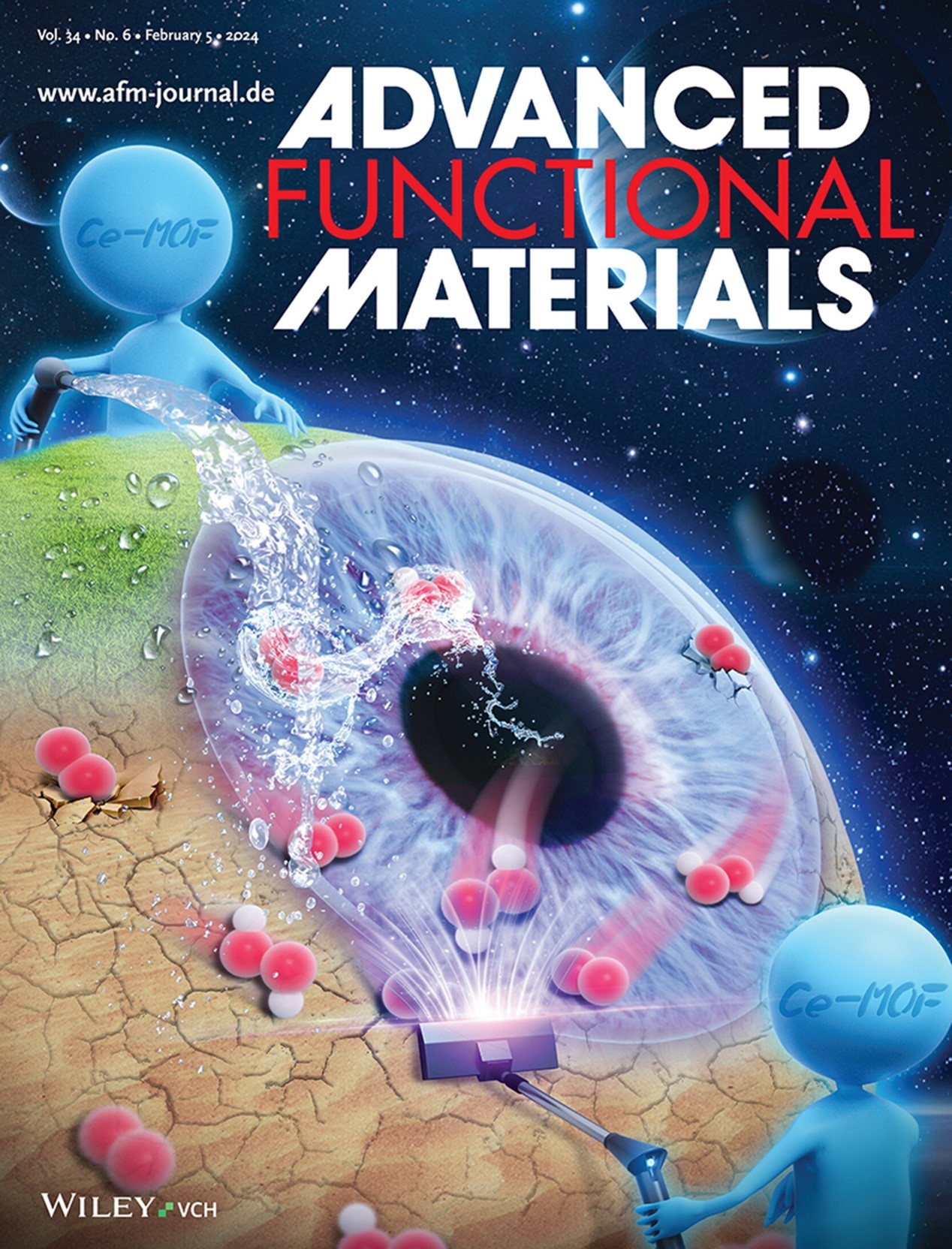Dry eye disease(DED), a prevalent mutli-factorial ophthalmic disease characterized by ocular discomfort and blurred vision, has an immense effect on patients’ daily lives. Although current steroid-like and immune-suppressive medications can ease DED symptoms to some extent, pharmacological side effects and recurrence of symptoms render anti-DED therapy challenging.
The research findings, titled “Engineering Ultra-Small Cerium-Based Metal–Organic Frameworks Nanozymes for Efficient Antioxidative Treatment of Dry Eye Disease” in material sciences were made by the team led by Professor Li Guisheng, USST and the team led by Huang Jinhai and Zhou Xingtao from Eye& Ent Hospital of Fudan University, with a cover paper published in international top journal Advanced Functional Materials, providing a non-invasive and effective solution to treating patients with the dry eye disease.
In this study, Ce-MOF nanozymes with antioxidant activity were prepared through a hydrothermal method using ammonium cerium nitrate and terephtalic aid as a core metal of Ce and organic ligand respectively. The three kinds of Ce-MoFs with different sizes were obtained named Ce-MOF 1 (213 nm), Ce-MOF 2 (36 nm), and Ce-MOF 3(2 nm) in sequence as particle size decreased. Then their morphology, phase structure, enzyme-mimetic capacity, and other characterizations were studied in detail. Meanwhile, the Ce-MOFs exhibited an excellent inhibition of intracellular ROS levels in the H 2 O2 -induced oxidative stress model in vitro, especially for Ce-MOF 3 nanozymes. Therapeutically, the Ce-MOF3 nanozymes could efficiently penetrate ocular tissue and alleviate the DED, including suppressing oxidate stress injury, accelerating corneal epithelium repair, and facilitating the recovery of tear secretion. Integrating with the biocompatibility of Ce-MOF 3 both in vitro and in vivo, the novel Ce-MOF 3 nanozymes promise an efficient, reliable, and valuable strategy for anti-DED treatment.
In recent years, the team led by Professor Li Guisheng has actively established cooperation with Changhai Hospital, Changzheng Hospital, Renji Hospital, Shanghai Stomatology Hospital, Shanghai Ninth People's Hospital, Eye & Ent Hospital of University under the medical-engineering interdisciplinary strategy, to implement 6 medical-engineering projects, 4 of which are key funding projects. This research is also another research results of great clinical significance and transformative potential in the field of medical-engineering field.


Related: https://onlinelibrary.wiley.com/doi/10.1002/adfm.202307569


